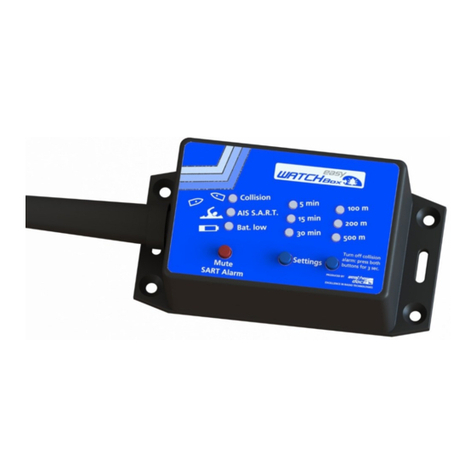Page 6
grated GNSS receiver. The device is intended for the usage
in combination with an automatic life jacket. The device
has a manual release mechanism and an automatic release
mechanism by water contact. The AIS MOB easyONE-DSCCL
is oatable without the need of any otation aids.
The AIS / DSC distress transmitter is designed for usage in
distress situation for alerting via:
• AIS: All AIS receivers within transmission range of the
AIS MOB
• DSC Closed Loop: Only pre-programmed MMSIs of DSC
receivers within range
• DSC Open Loop: All DSC receivers within range of the
transmitter
These recipients get information about the event of a
distress situation as well as the current position.
A transmission of position report in DSC closed loop is
possible to up to 8 different MMSIs, if they are already pro-
grammed into the easyONE-DSCCL device (programming can
be done easily with an iOS or Android device via Bluetooth)
A position report transmission in DSC open loop can be
trig-gered manually once by pressing the TEST button for 5
seconds during ALERT mode.
=> Responsible regulating authority can provide country
specic information if DSC open loop is allowed in your
area.
The easyONE-DSCCL device is compliant to the world wide
used AIS System (Automatic Identication System) and DSC
radio system (Digital Selective Call).




























